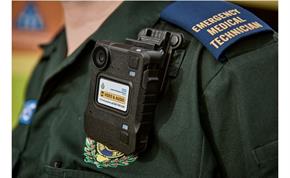
A woman has been sentenced to 12 months, suspended for two years, for assaulting a paramedic at South Western Ambulance Service (SWAS) after footage from body worn cameras helped secure the conviction.
Vanessa Blakey, a 25-year-old woman from Swindon, pleaded guilty to grievous bodily harm and assaulting an emergency worker after leaving paramedic Nick Brown with a broken eye socket in the violent assault.
The shocking footage of the assault was broadcast by BBC Breakfast to its over five million viewers and is still available on South Western Ambulance Service's You Tube channel.
Abuse and assaults on EEAST staff continue so colleagues are being urged to use body worn cameras when available so they can feel safer while working and help secure more convictions in the event of any assaults.
The team behind the camera scheme are addressing initial issues that prevented staff from using the kit, including finding better solutions to fastening the cameras to uniforms – particularly with polo shirts during the summer months. Several pieces of equipment are being trialled in Mid and South Essex that may be used more widely at EEAST.
Nineteen ambulance stations were chosen for the roll-out of the pilot in 2021 and work on installing the infrastructure for the cameras should be completed shortly at the final four stations – Colchester, Kempston, Luton and Weeley. The full list is:
Staff working from these stations should contact a leading operations manager to discuss wearing the body worn cameras. The cameras are straightforward to use and before using staff will be required to complete a short training course Evolve.
The cameras are controlled by the wearer and are only to be activated if they feel at risk, with the recording starting two minutes prior to the button being pressed.
A DATIX must be recorded whenever the cameras are activated. Any recordings can only be accessed by a small number of authorised users within the Trust and there is a standard operating procedure around this which has been approved by Information Governance.
How does the system work?
A staff member must be registered and have completed the Evolve training on the use of the cameras. We are looking to expand the number of staff registered so please contact your leading operations manager if you work in an area where the cameras are operational.
At the start of the shift, the staff member swipes their identity card to get a camera from the dock allocated to them. Any footage that is recorded during the shift is assigned to them until the camera is returned to the charging dock.
Any footage that is recorded can only be accessed from digital evidence software which is accessible by only a small number of authorised users in the Trust.
The Videomanager system has been evaluated for use by a Caldicott Guardian – the designated senior person responsible for protecting the confidentiality of people’s health and care information.
Wednesday 01 March 2023